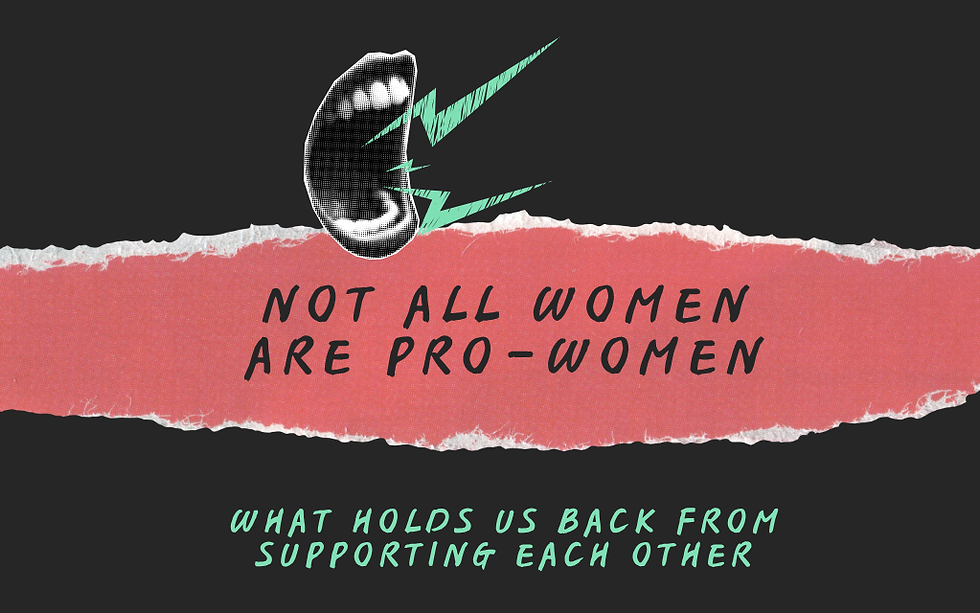Talking Trauma: Navigating The Difficult Work
- She Talks Asia
- Jul 13, 2022
- 3 min read


How do we look out for those looking after the vulnerable? This was the thought behind Talking Trauma: a micro-learning course on trauma for communicators, journalists and humanitarian workers.
She Talks Asia speaks with Chely Esguerra, the Head of Regional Communication Center—Bangkok of the International Committee of the Red Cross (@ICRC) and designer Sofia Cope on this important project.
STA: What is the story behind the commissioned work for Talking Trauma?
Chely: You know how different places give you different peeks into challenges? Our project team mostly consists of communicators for the International Committee of the Red Cross (ICRC), an organization that protects and assists people affected by conflict and other situations of violence.
Everyday, we work with fellow communicators and journalists who engage with trauma-impacted communities -- often to tell stories. While the center of this work should be the communities, we also wondered how communicators are informing themselves about trauma. How can we responsibly work with people who come from sensitive backgrounds? How can communicators avoid triggering re-traumatisation of victims and survivors? How can we ensure we are not over-exposing ourselves to trauma in our work?
These questions gave birth to a micro-learning course on trauma for communicators and journalists that is accessible via SMS or WhatsApp. It takes 3-5 minutes a day for 9 days to complete. We partnered with Dart Centre for Journalism and Trauma for the expertise and experience that they have in this work.
Making the graphics for this course included deliberate decision-making: from trying to make it as engaging and accessible as possible, and for the design to take on nuances that are sometimes oversimplified when visualizing concepts on trauma.

STA: What was the first step you took after being given this project, and what what the biggest challenge in the whole process?
Sofia: I knew I wouldn’t be able to do it on my own. I got two other talented designers on board to help me in conceptualizing and drafting the visuals. But it was so much more than a design project to us — I encouraged them to think of it as something that could potentially help many people in the media community and will help others see the value of therapy for journalists and humanitarians impacted by reporting on conflict. These things don’t always reach our awareness so I knew it was important to make use of optics that will get people to pay attention.
So I guess that was the first step: to understand the objective and to understand how important and potentially helpful the course can be. I find that when my team is aware of the project’s impact, we feel more motivated and inspired to be intentional about the process — from the colors down to the arrangement of the elements. From here, the research and ideation begins without much resistance because everyone is aware of the goal.
The biggest challenge for us was to make sure that we make a series of arresting visuals that relate to trauma without necessarily over-victimizing the target readers (the media workers). It’s a good and important challenge nonetheless.
STA: What has been the most meaningful feedback you’ve gotten on your this project since it was published?
Sofia: That the committee loved them and that many of the registrants found the images helpful in visualizing the thought of daily content. We are especially grateful knowing that the ICRC mission in Australia asked us to work on their Humanitarian Reporting Summit applying the same branding and intentional process we gave to the Talking Trauma visuals.


STA: Why is this a crucial topic to communicate in the work you do?
Chely: Trauma impacts people differently (including indirectly), and being aware of this helps to keep both those questioning, and those providing answers, emotionally and psychologically safe. Trying to navigate things like re-traumatisation, secondary trauma and repetitive exposure can be challenging without help.
For those who are more advanced in their knowledge of trauma, this may be too simple. We believe though that as an introduction, this course is easy to understand, access, and complete. So far we've had almost 300 people take the course in the span of 3 months.




Comments